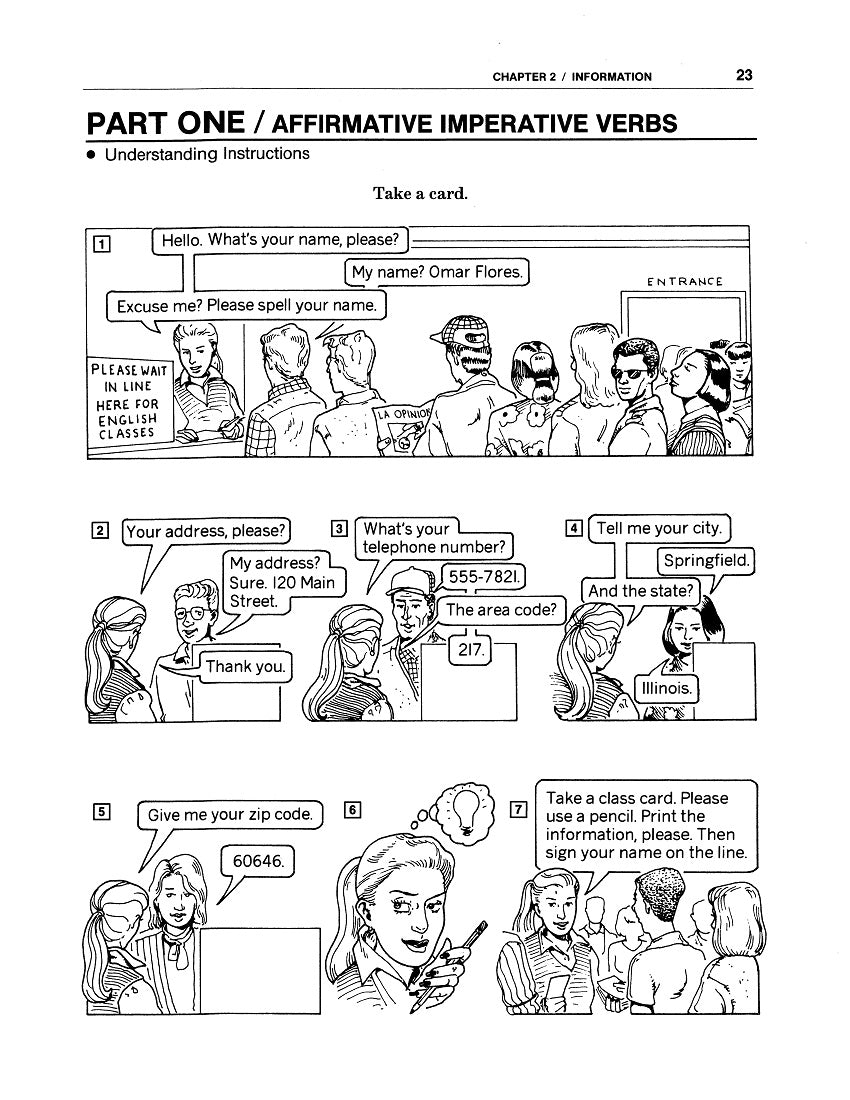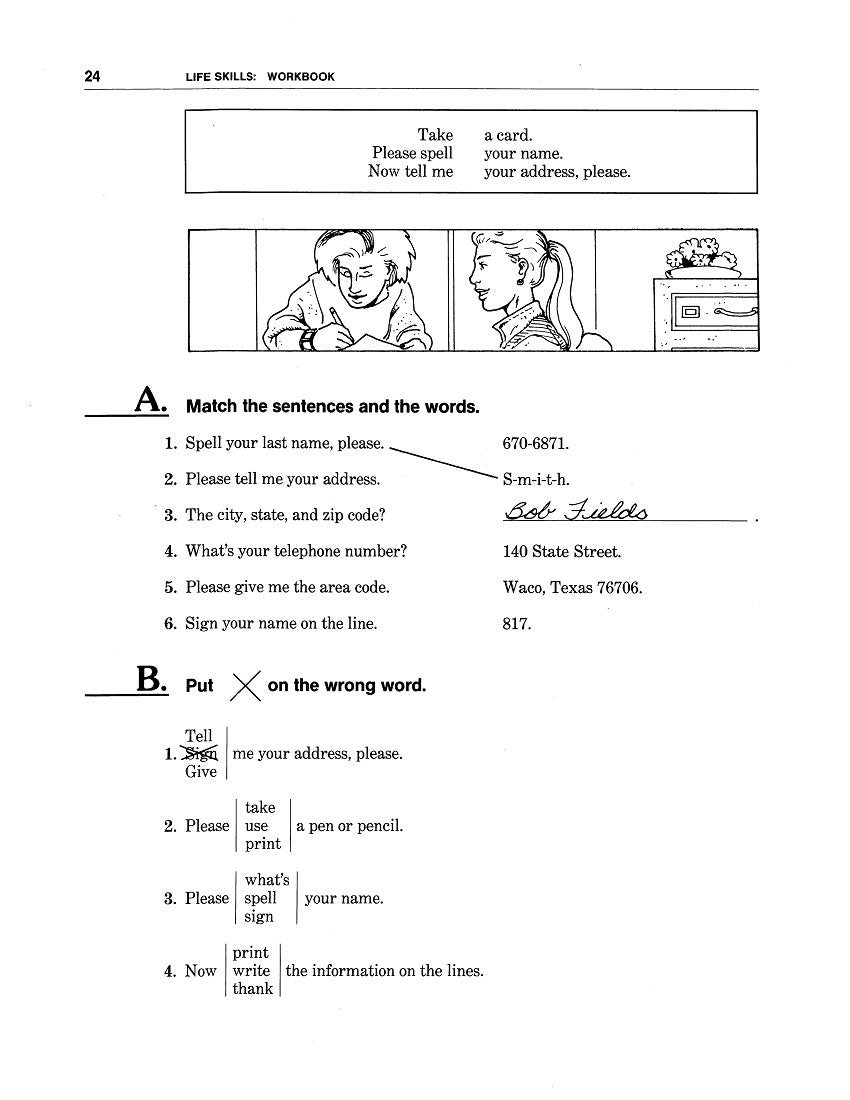1
/
of
2
Work/Life English
D-02.01 Get & Use Affirmative & Negative Base Verbs
D-02.01 Get & Use Affirmative & Negative Base Verbs
Regular price
$0.00 USD
Regular price
Sale price
$0.00 USD
Unit price
/
per
Parts One & Two of Chapter 2 (“Information”) of WorkLife English: Life Skills Workbook 1
5 Pages
Who It’s For: (Teachers & Helpers of) Beginning Language Learners
Why It’s Useful: In real-life contexts of grammar instruction, it makes sense to begin with Imperative Verbs—those base forms (of verbs without endings) that learners need to function in a partnered situation or group. Especially with novices, it also works to employ stages of Total Physical Response (TPR), a method of “teaching . . . concepts by having learners use physical movement to react to verbal input. The process mimics the way infants learn language, and it reduces student inhibitions and lowers stress.”
What You’ll Do:
[1] With participants, pantomime and read aloud the “Understanding Instructions” Strip-Story on page 23. After an illustrative title (“Take a Card.”), It contains seven two-line exchanges.
[2] With the Grammar-Pattern Box, identify sentence elements: Verbs, Noun Objects, and words with other functions. To do so, you might say sentences that begin with base verbs like “Point to . . . ,” “Show . . . ,” “Tell . . . ,” and the like. (Have everyone) Notice sentence word-order. Differentiate between Directives and expected Responses.
[3] For Exercises A-D, (help learners) respond to the instructions—perhaps by adding clarifying directives such as “Point there.” “Draw lines.” “Put X’s,” “Print words,” “Make circles.” Use gestures and motions when helpful.
[4] For the material on pages 26-27 (“Please Don’t Use Handwriting.”), repeat Steps [1] - [3]. Make sure the difference between Affirmative and Negative is clear. Check awareness of Sentence Subjects. In an Imperative Sentence, it’s always the pronoun you (Singular or Plural)
[5] In subsequent lessons, continue to refer to and build on the grammar concepts that students have recently encountered or mastered.
Couldn't load pickup availability




